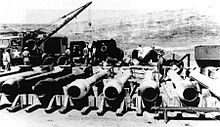Joseph O. Hirschfelder
Joseph O. Hirschfelder | |
|---|---|
 Los Alamos badge | |
| Born | May 27, 1911 Baltimore, Maryland,U.S. |
| Died | March 30, 1990(aged 78) |
| Alma mater | University of Minnesota Yale University Princeton University |
| Known for | Hirschfelder–Curtiss variable Backward differentiation formula |
| Scientific career | |
| Fields | Physics |
| Institutions | Institute for Advanced Study University of Wisconsin National Defense Research Committee Los Alamos National Laboratory |
| Thesis | (1936) |
| Doctoral advisor | Henry Eyring Eugene Wigner Hugh Stott Taylor |
| Doctoral students | Charles Francis Curtiss Robert Byron Bird |
Joseph Oakland Hirschfelder(May 27, 1911 – March 30, 1990) was an American physicist who participated in theManhattan Projectand in the creation of thenuclear bomb.[1][2]
Biography[edit]
Hirschfelder was born in Baltimore, Maryland, the son of a Jewish couple, Arthur Douglas and May Rosalie (Straus). He completed his undergraduate studies at theUniversity of Minnesotafrom 1927 to 1929 and atYale Universityfrom 1929 to 1931. Hirschfelder received doctorates inphysicsandchemistryfromPrinceton University[1]under the direction ofEugene Wigner,Henry EyringandHugh Stott Taylor.He worked as a postdoctoral fellow withJohn von Neumannfor a year after his PhD at theInstitute for Advanced Study.In 1937, he moved toUniversity of Wisconsinand stayed there until retirement in 1981, except during World War II. Robert Oppenheimerassembled a team at the Los Alamos Laboratory to work on plutonium gun designThin Man,that included senior engineerEdwin McMillanand senior physicistsCharles Critchfieldand Joseph Hirschfelder. Hirschfelder had been working oninternal ballistics.Oppenheimer led the design effort himself until June 1943, when NavyCaptainWilliam Sterling Parsonsarrived took over the Ordnance and Engineering Division and direct management of the "Thin Man" project.[3] Hirschfelder was a member of theNational Academy of Sciences,[1][2]a group leader intheoretical physicsand ordnance at theLos Alamos Atomic Bomb Laboratory,[1]chief phenomenologist at the nuclear bomb tests at Bikini,[1]the founder of the Theoretical Chemistry Institute and the Homer Adkins professor emeritus of chemistry at theUniversity of Wisconsin.[1]
Hirschfelder was also a fellow of the American Academy of Arts and Sciences.[2]He was awarded theNational Medal of Sciencefrom PresidentGerald Ford“for his fundamental contributions to atomic and molecular quantum mechanics, the theory of the rates of chemical reactions, and the structure and properties of gases and liquids”.[2]
TheNational Academies Presscalled him "one of the leading figures in theoretical chemistry during the period 1935–90".[2]In 1991 an award was established in his name by the University of Wisconsin's Theoretical Chemistry Institute – the annual Joseph O. Hirschfelder Prize in Theoretical Chemistry.[4]He was an elected member of theInternational Academy of Quantum Molecular Science.[5]His bookMolecular theory of gases and liquidsis an authoritative text on the kinetic theories of gases and liquids.

Publications[edit]
Books[edit]
- Joseph O. Hirschfelder, Charles F. Curtiss,Robert Byron Bird(1966).Molecular theory of gases and liquids.Wiley Interscience.ISBN978-0471400653.
{{cite book}}:CS1 maint: multiple names: authors list (link)
Awards and distinctions[edit]
- 1953 - elected to theNational Academy of Sciences[6]
- 1959 - elected to theAmerican Academy of Arts and Sciences[2]
- 1965 - elected to the Norwegian Royal Society[2]
- 1966 - thePeter Debye Awardfrom theAmerican Chemical Society[2]
- 1966 - theAlfred C. EgertonGold Medal of theCombustion Institute[7]
- 1976 - theNational Medal of Science[8]
- 1978 - honorary degree fromMarquette University[2]
- 1980 - honorary degree theUniversity of Southern California[2]
- 1981 - elected to theRoyal Society of Chemistryof Great Britain[2]
- 1981 - the Silver Medal of theAmerican Society of Mechanical Engineers[2]
Joseph O. Hirschfelder Prize is awarded annually by the department of chemistry at the University of Wisconsin in honor of Hirschfelder.[9]
References[edit]
- ^abcdefNew York Times: Obituaries: J. O. Hirschfelder, 78, Atom Bomb Developer, March 31, 1990.
- ^abcdefghijklNational Academies Press:Biographical Memoirs V. 66 (1995), JOSEPH OAKLAND HIRSCHFELDER, BY R. BYRON BIRD, CHARLES F. CURTISS, AND PHILLIP R. CERTAIN.
- ^Hoddeson et al. 1993,pp. 83–84.
- ^University of Wisconsin, Joseph O. Hirschfelder PrizeArchived2017-10-28 at theWayback Machine.
- ^Members of IAQMS.
- ^"Joseph Hirschfelder".
- ^"Alfred C. Egerton Gold Medal | the Combustion Institute".24 June 2016.
- ^"NSTMF".
- ^"Joseph O. Hirschfelder Prize | UW-Madison Department of Chemistry".Archived fromthe originalon 2018-07-04.Retrieved2018-07-03.
Source[edit]
- Hoddeson, Lillian;Henriksen, Paul W.; Meade, Roger A.;Westfall, Catherine L.(1993).Critical Assembly: A Technical History of Los Alamos During the Oppenheimer Years, 1943–1945.New York, New York: Cambridge University Press.ISBN0-521-44132-3.OCLC26764320.
External links[edit]
- 1911 births
- 1990 deaths
- 20th-century American physicists
- 20th-century American chemists
- American nuclear physicists
- Jewish American physicists
- Jewish chemists
- Manhattan Project people
- Nuclear weapons scientists and engineers
- Members of the United States National Academy of Sciences
- University of Wisconsin–Madison faculty
- Members of the International Academy of Quantum Molecular Science
- 20th-century American Jews
- Yale University alumni
